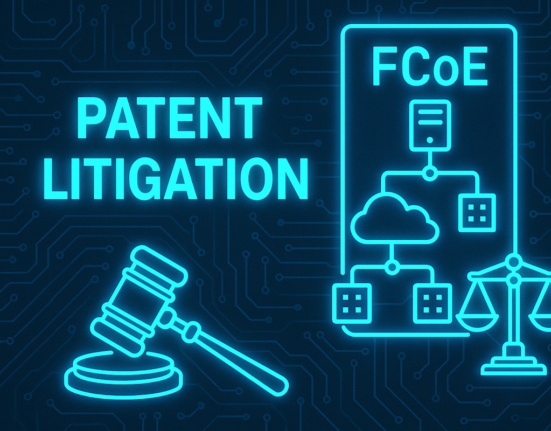Key Takeaways
- Revolutionary innovation is the ideal support for the “intangible asset” moat source. It can profoundly change the way a disease is treated. It can dramatically improve patient outcomes and survival. It can displace an older product or fill a gap in care where previously there was a large unmet need for patients.
- GLP-1 drugs are definitely a great example—probably one of the best examples we’ll ever see—of a revolutionary innovation. The main drugs come from two firms, Novo Nordisk and Eli Lilly.
- Another area of innovation that has been off to a rocky start but still has a lot of potential is Alzheimer’s disease treatments. Eli Lilly has one of the two marketed drugs, and Biogen and Japanese firm Eisai together are marketing a drug that is quite similar. On the medical-device side, Medtronic leads in areas like spinal cord stimulation for pain and also new ways to treat high blood pressure.
Laura Lallos: Hello, I’m Laura Lallos with Morningstar. At this year’s Morningstar Investment Conference in Chicago, Morningstar equity researchers will share their insights on the future of healthcare. Innovations in drugs, devices, and diagnostics will drive growth for the sector, and some companies are better positioned than others to take the lead. Research director Karen Andersen is here today to talk about some of these trends and the companies that stand to benefit the most. Thank you for joining me, Karen.
Karen Andersen: Great. Thanks so much, Laura.
What Makes an Innovation in Healthcare Revolutionary?
Lallos: The presentation you’re giving is subtitled “Revolutionary Innovations Poised to Drive Sector Growth.” To lay some groundwork, what makes an innovation revolutionary? Could you give an example of a past development that, in retrospect, completely changed an aspect of healthcare?
Andersen: I think the important thing here is to be able to contrast revolutionary versus evolutionary innovation. So, some of these types of innovation are more important in certain industries than others. Evolutionary innovation tends to be based on more incremental changes to a product. Something might have slightly improved convenience, slight improvements to efficacy, but it doesn’t really lead to a meaningful change in the way that a physician might treat a disease.
A lot of medical-device firms tend to rely on this form of innovation just because they actually do already have a lot of competitive advantages in the form of switching costs. Doctors oftentimes don’t like to switch the type of medical device they’re implanting into patients because it does require a lot of training and a lot of familiarity to get used to those products.
I’d say revolutionary innovation is really the ideal support for the “intangible asset” moat source. This is something that can profoundly change the way a disease is treated. It can dramatically improve patient outcomes and survival. It can displace an older product or fill a gap in care where previously there was a large unmet need for patients.
Mostly pharmaceutical companies and some device firms rely on this kind of revolutionary innovation. For pharmaceutical firms, in particular, it’s very important because they’re constrained by the patent expiration. There’s always kind of a ticking clock for these companies. A lot of times, they’ll only have about 12 years after launch until they’ll face patent expiration. So, having something that’s more of a revolutionary innovation is really critical there.
I’d say for examples, on the medical-device side, a good example might be something like coronary stents back in the 1990s, I think just dramatically improved outcomes for people with cardiovascular disease, heart attacks. Statins, also in the cardiovascular category, but on the drug side. Statins back in the ’90s and 2000s, those were really dramatically effective in lowering cholesterol levels and lowering cardiovascular risk.
Why Eli Lilly and Novo Nordisk Are Lead Innovators in the GLP-1 Drug Market
Lallos: Your area of expertise is biopharma, and obesity treatments have been making headlines for a couple of years now, and it’s a competitive arena. Who are today’s leaders, and are there innovative challengers in the field?
Andersen: The GLP-1 therapies in obesity, this is definitely a great example—probably one of the best examples we’ll ever see—of a revolutionary innovation. The latest generation of these GLP-1 drugs, they mimic a gut hormone, and they’ve led to really significant weight loss, in addition to their first use just as a diabetes drug.
The main drugs right now do come from two firms. It’s Novo Nordisk NVO and Eli Lilly LLY. Right now, I’d say in terms of who has the better portfolio, the pendulum has kind of swung toward Lilly. They appear to have the more effective treatment on the market. However, I’d say both companies are fighting to build very strong pipelines and are going to be launching new products over the next few years.
And as you mentioned, there are dozens of other firms that are testing new compounds that could improve on the way that we treat obesity. As we approach probably the early 2030s, there will be a lot more options of new combinations, new oral products, things that are more tolerable, higher efficacy, a variety of ways we could probably improve on what we already have.
Lallos: So, maybe no more injections, but easier ways to get these effects.
Andersen: Or maybe injections for a short period of time if you need a high-efficacy product, and then transition to an oral drug for maintenance.
How Biogen and Medtronic Are Working Toward Becoming Leaders in Innovation and Revolution in Healthcare
Lallos: What are some other areas that are ripe for innovation and revolution? And what companies are in the lead there?
Andersen: Another area I’d highlight, which has been off to a little bit of a rocky start, I’d say, but I think still has a lot of potential, would be Alzheimer’s disease treatments. Eli Lilly actually has one of the two marketed drugs, new drugs for Alzheimer’s, with Kisunla getting approval just recently. Then, Biogen BIIB and Japanese firm Eisai, they together, are marketing a drug called Leqembi that is quite similar. Those two products, they’re relatively new. They’ve had a pretty slow launch, and that’s despite the fact that they’re really groundbreaking. I mean, they’re the first two drugs that have been able to slow cognitive decline in Alzheimer’s patients.
I think that what’s interesting here is that we’re making progress not only with coming up with new therapies to actually treat the underlying cause of Alzheimer’s but also we’re making progress with diagnosing the disease, and I think that that’s going to be one of the main things that really triggers this as a more revolution in Alzheimer’s treatment. Right now, diagnostics are very invasive or difficult or expensive to do. People have to get imaging done or they have to get spinal fluid taken, so there can be some pain or some risks involved.
I think there’s been a lot of progress with developing blood tests. Having blood tests that can help patients determine whether they’re likely to have Alzheimer’s or, in fact, even fully diagnose Alzheimer’s, I think is going to be really key to getting more patients who need it access to these new drug therapies.
And then also on the medical-device side, something we’re going to be talking about at the conference, is companies like Medtronic MDT, their leadership in areas like spinal cord stimulation for pain and also new ways to treat high blood pressure. There are certain procedures that can work on reducing nerve signals to the kidneys that actually can affect and help lower blood pressure in ways that drug treatment sometimes cannot.
Healthcare Stocks That Are a Buy Today
Lallos: Investors who are intrigued by these ideas and developments, they’re looking for good companies to buy today, they need to think about the valuation of the stocks, of course. With that in mind, where are the best opportunities right now for investors?
Andersen: It’s a great question, and I think it’s always tricky to find kind of that intersection between companies that are very innovative but also undervalued because, of course, investors love innovative firms. Eli Lilly is a great example. That’s one that is currently trading above our fair value estimate.
I’d say the best examples we have of innovative firms that also look like good investment opportunities. One on the drug side I would mention would be Merck MRK. They’ve been under a lot of pressure specifically because they have a lot of concentration around a drug, Keytruda, a cancer drug that was one of these big revolutionary changes in cancer treatment. But of course, the patent will expire. 2028 is when they’re going to start seeing some pressure. But one of the reasons I really like the company is that I think that they’re fundamentally a very innovative company. They have a very strong, large, diversified, and advanced pipeline of new products. Some new products are already launching, some are just getting through the last clinical studies. So, I think they’re going to have a lot of innovation to back them up as they fight that decline in Keytruda sales.
On the medical-device side, I’d highlight Medtronic. I think that one of the reasons shares might be a little bit cheaper right now, I think there are some fears that they could pay for another large acquisition. That’s something that hasn’t been popular with Medtronic shareholders in the past. They could also continue to face some labor constraints in hospitals that could hold back utilization of some of their devices. But, really, it’s the largest pure-play medical-device company. They’ve got a lot of experience in cardiovascular medical devices and a lot of exposure to some newer technologies like the kidney procedure I was talking about for high blood pressure. It’s the first out of the gate there. So, I think that they’re proving that they have the ability to come up with more revolutionary innovation.
Healthcare Companies That Investors Should Be Cautious About
Lallos: These kinds of revolutions are a threat to other companies. They can overturn the old guard. Thinking as an investor, are there companies that are at risk today that investors should be cautious about?
Andersen: That’s a great question. I think it’s funny, I highlighted Merck as an example of a best investment opportunity, but it’s probably also the most exposed to a fading revolutionary technology. I’d say, though, that I happen to think that they are very well-positioned, so I don’t really see them as an old-guard company. Looking at our coverage, the best way to think about this is that the way we value companies that might be more exposed to this risk is probably through moat ratings.
A good example would be a company like Edwards EW on the medical-device side. They’ve been very innovative with heart valves. But they have a very specific focus, a niche of innovation that’s driven strong profitability, but it’s a classic example of a company that’s carved out a narrow moat and not a wide moat.
I guess one way we think about the risk of new guard in these areas is just by shortening the time horizon in our model, where they can really outearn their cost of capital. Having a narrow moat kind of reins in our evaluation to some extent on these names and prevents us from, I guess, being maybe as excited on valuation for some of these companies.
Lallos: Those risks are incorporated into your valuations, and it’s something that investors can see and be aware of.
Andersen: Exactly. That’s right.
Lallos: Well, thank you, Karen. I look forward to learning more at the conference.
Andersen: Sounds great. Thanks so much.







